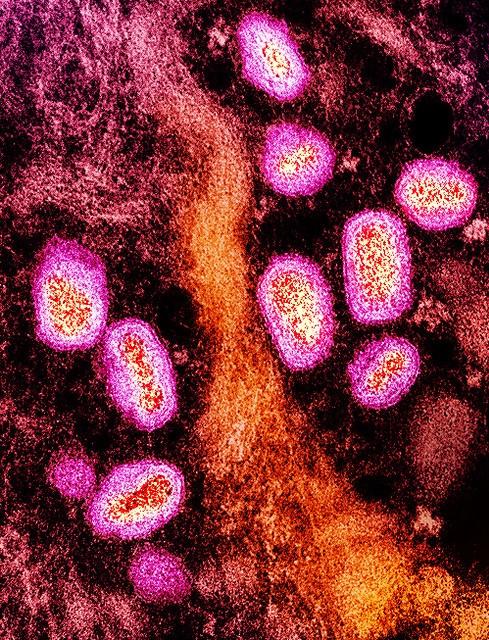In unsurprising news, the mpox outbreak of 2022 was largely concentrated in US cities, according to a new study of geographic and surveillance trends published today in Morbidity and Mortality Weekly Report (MMWR), but a second MMWR study spotlights which areas of the country have the highest immunity and which are at greatest risk of mpox resurgence.
Only 1.5% of cases in rural areas
The first study was based on data reported to the Centers for Disease Control and Prevention (CDC) of mpox cases from May 10 2022, to December 31, 2022. A total of 29,980 confirmed and probable mpox cases were reported during that time, largely among men who have sex with men (MSM).
Of the cases, 71.0% occurred in people living in large central urban areas. Only 440 cases (1.5%) were recorded in rural areas.
The racial and ethnic distribution of cases also depended on geography: Hispanic persons accounted for 33.8% and 26.5% of cases in large central urban and large fringe urban areas, respectively, but only 14.3% and 15.1% in small urban and rural areas, the authors found. The proportion of White people with mpox in rural areas was greater than in urban areas. White people made up 42.8% and 43.3% of cases in small urban and rural areas, respectively, and 28.2% in large central, 28.2% in large fringe, and 35.8% in medium urban areas.
Overall the US incidence of mpox was 13.5 cases per 100,000 people. The rate in large central urban areas was 30.6, much higher than rates in large fringe urban areas (9.7), medium urban areas (4.9), small urban areas (2.8), and rural areas (1.5).
In the United States, 85% of the population lives in areas classified as urban, and the majority of mpox cases occurred in urban areas, with the highest incidence in large central urban areas.
Among cisgender men, the incidence in rural areas (2.8 per 100,000) was approximately 4% that of large central urban areas, the authors said.
"In the United States, 85% of the population lives in areas classified as urban, and the majority of mpox cases occurred in urban areas, with the highest incidence in large central urban areas," the authors concluded.
"Across all urban-rural levels, incidence peaked in August 2022. Although the number of mpox cases decreased sharply after this date, the risk for outbreak and recurrence is dependent on the estimated immunity level, which is calculated by the number of cases during the 2022 outbreak and vaccination rates."
The authors said their data supports the ongoing surveillance of mpox in US urban areas.
Increasing vaccination could limit future outbreaks
In the second mpox study, CDC scientists used modeling to estimate the risk for future mpox outbreaks in the United States and found that more than 592,000 MSM live in jurisdictions with a risk for mpox recurrences if a cluster of infectious cases were reintroduced.
The risk of new outbreaks is related to the number of MSM in a community who have not been vaccinated against or infected with mpox. Immunity levels were calculated as a 37%, 67%, and 100% reduction in a chance of reoccurrence for those who had received one or two vaccine doses or had a history of infection, respectively.
Only 15 US jurisdictions are predicted to be at minimal risk for recurrence because of their high levels of population immunity. Los Angeles, New York City, San Francisco, and Washington, DC, are high-immunity jurisdictions that are likely to have minimal risk for recurrence.
But Duval County, Florida, Shelby County, Tennessee, and Hamilton County, Ohio—home to Jacksonville, Memphis, and Cincinnati, respectively—are at the highest risk for a future outbreak.
"This analysis highlights the importance of public health programs identifying opportunities to promote vaccination before Pride-related and other events when vaccination interest might be higher, rather than vaccinating after reintroduction is identified," the authors concluded.



















